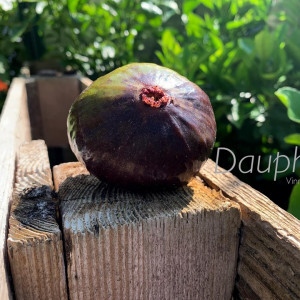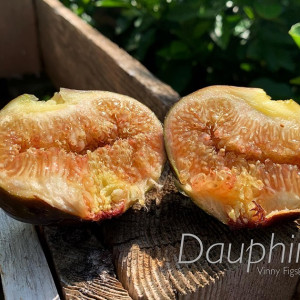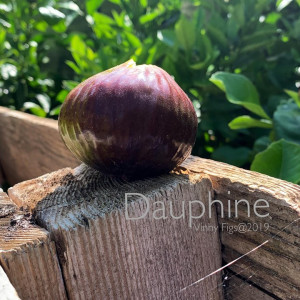This site contains affiliate links for which I may be compensated.
Dauphine (San Pedro)
Dauphine (San Pedro) Information
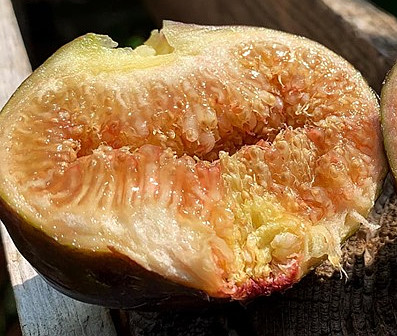
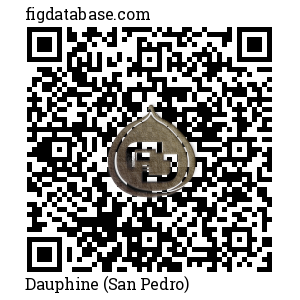
-
Possible Synonyms / AKA:
Violette, Ficus carica punctulata Risso, Gold Drop, Golden ball, Golden button, Grantham's Royal, Granthams Royal, Gray of Tarascon, Grise de Tarascon, Grise of Beaucaire, Grose of Tarascon, Grosse de Juillet, Grosse Violette, Hative Red of Argenteuil, Mussega Negra, New Violet, Pagaudière, Roll from Gold, Ronde Violette Hâtive, Rouge d'Argenteuil, Rouge de Argenteuil, White of Argenteuil
-
Introduced By:
-
Origin:
France -
Main Flavor Group:
-
Family Group:
-
Fig Type:
San Pedro - Both Smyrna and common figs on one tree. Example dessert king, which will produce edible Brebas but need the was to ripen main crop figs. -
Cold Hardy:
N/A -
Container Variety:
N/A -
Easy Rooting:
N/A -
Main Season:
any -
Availability:
N/A -
Breba Crop:
N/A -
Seed Crunch:
N/A -
Eye:
N/A -
Skin Toughness:
N/A -
Fruit Size:
N/A -
Rain Resistance:
N/A -
Tree Vigor:
N/A -
External Links:
https://www.ourfigs.com/forum/figs-home/105247-dauphine-grantham-s-royal-violette-dauphine
https://www.figdatabase.com/uploads/Figs in the Pacific Northwest.pdf
As Grantham's Royal:
https://youtu.be/W6NEoGUBQr0
https://youtu.be/U4W3xNFDUWc
Description
Condit Monograph
Dauphine [under San Pedro type]: (syns. Dauphine Violette, Grosse Violette, Ronde Violette Hative, Rouge DE Argenteuil, Mussega Negra, Ficus carica punctulata Risso, Pagaudiere, Adam). Described by Risso (1826), Barron (1868c, 1891), Lherault (1872), Du Breuil (1876), Simon-Louis (1895), Eisen (1888, 1901), Forrer (1894), Schneider (1902), Juignet (1909), Mazieres (1920), Bois (1928), Soc. Nat. d'Hort. DE France (1928), A. Riviere (1928), Delplace (1933), Simonet et al. (1945), Delbard (1947), Evreinoff (1947), and by Simonet and Chopinet (1947). Illustrated in Black and white by Du Breuil, Bois, Simonet, and Condit (1941 a, fig. 2, H). Illustrated in color by Delbard, and by Simonet and Chopinet.
Dauphine is grown near Paris for its abundant Breba crop; it is also cultivated extensively in southern France on account of its large, attractive fruits, which carry well to distant markets. According to Simonet et al., it is known at Sollies-Pont as Boule d'Or, Bouton d'Or, and Grosse DE Juillet; but the last name is also given as a synonym of Sultane. These authors also refer it to Mussega Negra (Ficus carica punctulata Risso). There are small plantings of Dauphine near Tokyo, Japan, where the brebas ripen in July.
In 1883, Dauphine was introduced into California from England by John Rock as Ronde Violette Hative, and trees were planted for trial at various experiment stations in this state and in Arizona. At the Tulare, California, station, it was reported to be one of the most promising commercial sorts under tests. P.I. No. 18,912 of the Chiswick collection was labeled Dauphine. Another one of the same collection, P.I. No. 18,873, labeled Adam, was found to be the same as Dauphine, both in tree and in fruit. A variety introduced from France by Felix Gillet, Nevada City, as Pagaudiere, has also proved at Riverside to be identical with Dauphine, although Eisen described it as a reddish-yellow fig.
Trees were under trial at the Government Date Garden, Indio, before 1926, and several growers in the Coachella Valley obtained cuttings. From one small commercial orchard, the fresh figs were sent to market under the name ''Superba.'' No other commercial plantings have been made in California, as Dauphine can hardly compete successfully with other Black figs such as Franciscana (Mission) for fresh-fruit shipping, and its quality dried is very inferior. Trees have fruited at Fresno since 1924, and at Riverside since 1931.
In California, trees of Dauphine drop all fruits of the second crop unless Caprification is practiced. Tree vigorous, upright; outer branches drooping; terminal dormant buds green, shading to brown or violet. Leaves medium to large, 3- to 5-lobed; upper surface somewhat glossy; upper sinuses of medium depth and width, lower sinuses shallow and broad; base subcordate; margins coarsely crenate. Description of fruit is from specimens at Riverside, in comparison with the account by Simonet.
Breba crop generally good; fruit large, 2-1/2 by 2-1/2 inches, turbinate, with or without a short, broad neck; average weight 92 grams; stalk up to 1/4 inch long; ribs broad, slightly elevated, more deeply colored than body; eye large, protruding, open, scales violet; skin of firm texture, resistant; surface glossy, with white flecks numerous and conspicuous; bloom rather heavy, pruinose; color greenish violet in the shade to violet-purple on exposed side, shading to green toward the stalk; meat white, almost 1/4 inch thick; pulp light strawberry; seeds large, fairly numerous. Flavor fairly rich, but lacking distinctive fig character. Quality fair to good; especially good for shipping fresh.
Second-crop figs much the same as brebas, except for smaller size; shape oblate- spherical; pulp gelatinous with fertile seeds; average weight 70 grams; quality poor;
If you'd like your banner to be shown here and throughout Fig Database, send us a message.
Photos Add Your Image
YouTube Videos
No Videos Found





